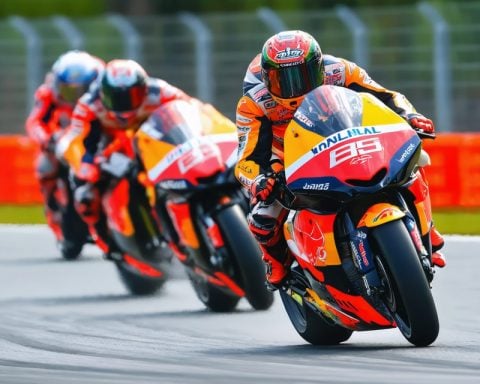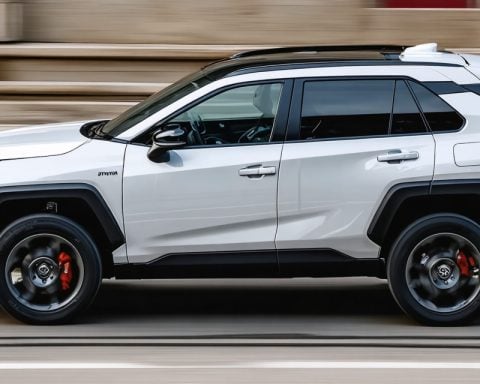The Future of Autonomous Ride-Hailing
Tesla’s ambitious plans for driverless ride-hailing services are on the horizon, with CEO Elon Musk projecting launches in California and Texas within the next year. During a quarterly earnings call, Musk expressed confidence that unmanned Teslas will begin providing paid rides in the near future. This announcement marks a bold step towards a vision that involves overcoming substantial regulatory and technical challenges, particularly in California, known for its stringent autonomous vehicle rules.
Currently, Tesla has been running a ride-hailing service limited to employees in the San Francisco Bay Area, but these rides are still supervised by a safety driver. Musk has previously hinted at an “unsupervised” self-driving feature expected to be ready by 2025.
In California, the regulatory landscape poses a significant challenge, as the DMV enforces strict permit requirements for autonomous vehicle operations. Unlike Tesla, companies such as Waymo have successfully navigated these regulations to offer paid rides in urban areas.
In contrast, Texas presents a more favorable environment for Tesla’s driverless tests due to fewer restrictions. Nevertheless, extensive trials are still necessary before launching their services.
Despite setbacks with the Full Self-Driving (FSD) program due to safety investigations, Musk introduced a cutting-edge Cybercab, highlighting his unwavering commitment to innovation in the taxi market. As Tesla pushes forward, the competition among ride-hailing services may intensify, reshaping the transportation landscape.
The Rise of Autonomous Ride-Hailing: What to Expect
Tesla is on the verge of transforming the ride-hailing landscape with its plans for driverless services, spearheaded by CEO Elon Musk. His ambitious vision includes launching paid rides in California and Texas within the coming year, marking a significant step in the realm of autonomous vehicles.
Overview of Innovations in Autonomous Vehicles
Tesla’s journey towards a fully autonomous ride-hailing service involves navigating complex regulatory and technical landscapes, particularly in states like California. Unlike Tesla, which currently operates a supervised ride-hailing service for employees in the San Francisco Bay Area, competitors such as Waymo have successfully implemented paid services in urban regions. This places Tesla at a crossroads, needing to overcome strict DMV regulations to expand its service offerings.
Pros and Cons of Autonomous Ride-Hailing Services
Pros:
– Safety Improvement: With advanced sensors and AI, autonomous vehicles have the potential to reduce traffic accidents and enhance safety.
– Efficiency: Autonomous ride-hailing can optimize traffic flow and reduce congestion, leading to shorter wait times and more efficient routes.
– Accessibility: These services can provide reliable transportation for individuals who may not be able to drive, including the elderly and disabled.
Cons:
– Regulatory Hurdles: Different states have varied regulations, which can complicate deployment. California’s strict requirements are a notable barrier.
– Public Perception: Resistance from some consumers who may distrust autonomous technology could hinder adoption rates.
– Job Displacement: An increase in autonomous vehicles may threaten jobs in the driving sector, raising economic concerns.
Key Features of Tesla’s Upcoming Cybercab
Tesla’s introduction of the Cybercab highlights several innovative features designed to enhance the ride-hailing experience:
– Autonomous Navigation: Equipped with state-of-the-art AI, the Cybercab can navigate city streets without human intervention.
– Real-time Updates: Passengers will receive real-time information about their ride, including estimated time of arrival and route changes.
– Safety Protocols: Advanced safety features are integrated to handle various driving scenarios and ensure passenger safety.
Market Analysis and Predictions
The race towards fully autonomous ride-hailing services is intensifying, with companies vying for a significant share of the market. Analysts predict:
– Increased Competition: Traditional ride-hailing services may expand their offerings to include autonomous options, creating a diverse market.
– Innovative Collaborations: Partnerships between tech companies and traditional taxi operators may emerge to facilitate the transition to autonomous services.
– Consumer Adoption Rates: As technology improves and regulations ease, consumer acceptance of autonomous ride-hailing is expected to rise.
Use Cases for Autonomous Ride-Hailing
– Urban Transportation: In densely populated areas, autonomous taxis could provide efficient and cost-effective transportation alternatives.
– Logistics and Deliveries: Beyond passenger services, autonomous vehicles could be used for freight transport, reshaping delivery logistics.
– Emergency Response: Autonomous ride-hailing could eventually assist in emergency situations, providing quicker access to healthcare or urgent services.
Limitations and Security Aspects
While the future of autonomous ride-hailing appears promising, there are limitations to consider:
– Technical Limitations: Current AI technology may struggle with complex decision-making in unpredictable scenarios.
– Cybersecurity Risks: As with any connected technology, autonomous ride-hailing services face the risk of cyber attacks, necessitating robust security measures.
– Insurance Challenges: The introduction of driverless vehicles raises questions about liability and insurance frameworks which remain unresolved.
Conclusion
Tesla’s drive towards autonomous ride-hailing technology holds the promise of reshaping the transportation landscape. However, the successful implementation of these services will depend on overcoming regulatory hurdles, addressing public concerns, and ensuring safety and security. As the industry evolves, continuous innovation and collaboration will be crucial for sustaining momentum.
For more information on autonomous vehicles and emerging technologies, visit Tesla.












